Blocking information: Curfew finally lifted in Kashmir Valley
New Delhi imposed curfew in an effort to thwart protests and any possible backlash from Afzal Guru’s hanging.
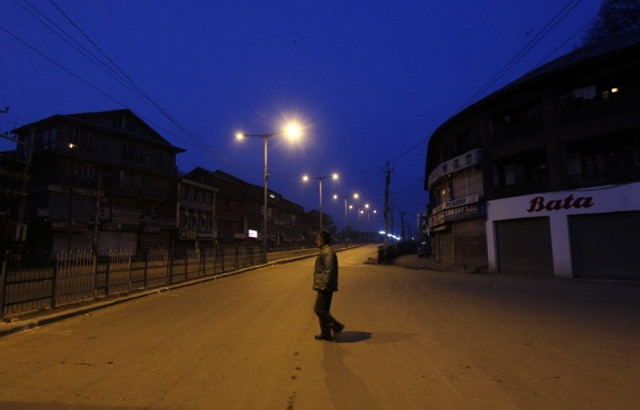
An Indian policeman patrols a deserted road during a curfew in Srinagar February 11, 2013. PHOTO: REUTERS
After one long week of limited communication with the outside world, curfew has been lifted in the strife-torn Kashmir Valley.
New Delhi imposed the curfew, ostensibly in an effort to thwart protests and any possible backlash from Afzal Guru’s hanging in Kashmir last Saturday. Guru was convicted of conspiracy and sentenced to death by a special court in 2002 for his role in planning an attack on India’s Parliament in December 2001. He was hanged in a covert operation at Tirah jail in New Delhi early last Saturday.
The curfew also appeared to be an attempt by New Delhi to throttle the flow of information on Afzal’s hanging into Kashmir. Access to internet, newspapers, television, mobile phones and even basic goods remained limited all week. Only hospitals and emergency services remained open.
“We were finally getting back on our feet in the past two years after decades of tension,” said a businessman in Srinagar over the phone, who asked not to be named due to fear of retaliatory action, “now it looks like we are back to square one.”
Police made public announcements on Friday morning asking people not to come out of their homes. However, there were reasonable crowds at mosques on Friday in Srinagar, and all remained peaceful, according to local residents.
Three people have died and around 100 people have been injured so far in clashes between protestors and security forces since last week. Most of the violent protests happened in Sopore and Baramulla, the birth place of Afzal.
The ban on the movement of people and vehicles was imposed under Section 144 of India’s criminal procedure code, which prohibits the assembly of more than four people. Internet, mobile data, and cable services, which were restricted following Afzal Guru’s hanging, remain down in many parts of the region.
Since Afzal’s conviction, many Kashmiris have expressed their opposition to the death sentence, saying he was not provided proper legal aid. His wife had requested a pardon from the Indian president, but her plea was rejected. Many people are also outraged that the government letter carrying the news of his execution reached Afzal’s widow in Sopore only after he died.
Before Afzal’s hanging, Kashmiris had planned processions to mark the death of Maqbool Bhatt, a Jammu Kashmir Liberation Front (JKLF) leader who was hanged on February 11, 1984. Many analysts maintain that his death was the major reason behind 20 years of unrest in the valley. Afzal was buried in Delhi’s Tihar Jail, just as Maqbool Bhatt was.
“We were just trying to forget the scars of Maqbool Bhatt and move on,” said a student who studies in Kashmir University, “these fresh wounds were uncalled for.”
This was the longest curfew since 2010, when the valley was shaken by mass pro-independence demonstrations, and it affected commerce significantly.
“Our main business is tourism,” said a taxi driver from Gulmarg, “who will come to a place that is strife-ridden? We had been sleeping with half empty stomachs for a long time and now it looks like we will have to do it again.”
There was no official ban on publishing newspapers by the government, however, some editors preferred not to publish their papers as their delivery trucks weren’t allowed to deliver them, others have said they have received veiled threats from the government preventing them from doing so. As a result, social media and blogs from Kashmir have been very active in keeping the world informed of the situation in the area.
Many residents are running out of basic supplies, and several are hoarding back up supplies of basic food items.
“I plead with my fellow Kashmiris not to protest the killing of Afzal Guru, he was convicted by Indian law, we are all Indians and we should respect Indian law,” said a tradesman from Srinagar on the phone.
With all shops shuttered down and several Central Reserve Police Force officers populating the streets, the familiar air of tension is back in Srinagar.
Published in The Express Tribune, February 17th, 2013.

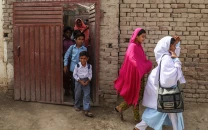
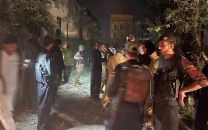
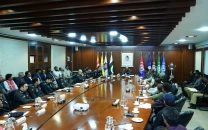

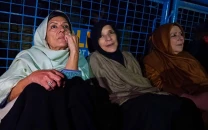













COMMENTS
Comments are moderated and generally will be posted if they are on-topic and not abusive.
For more information, please see our Comments FAQ